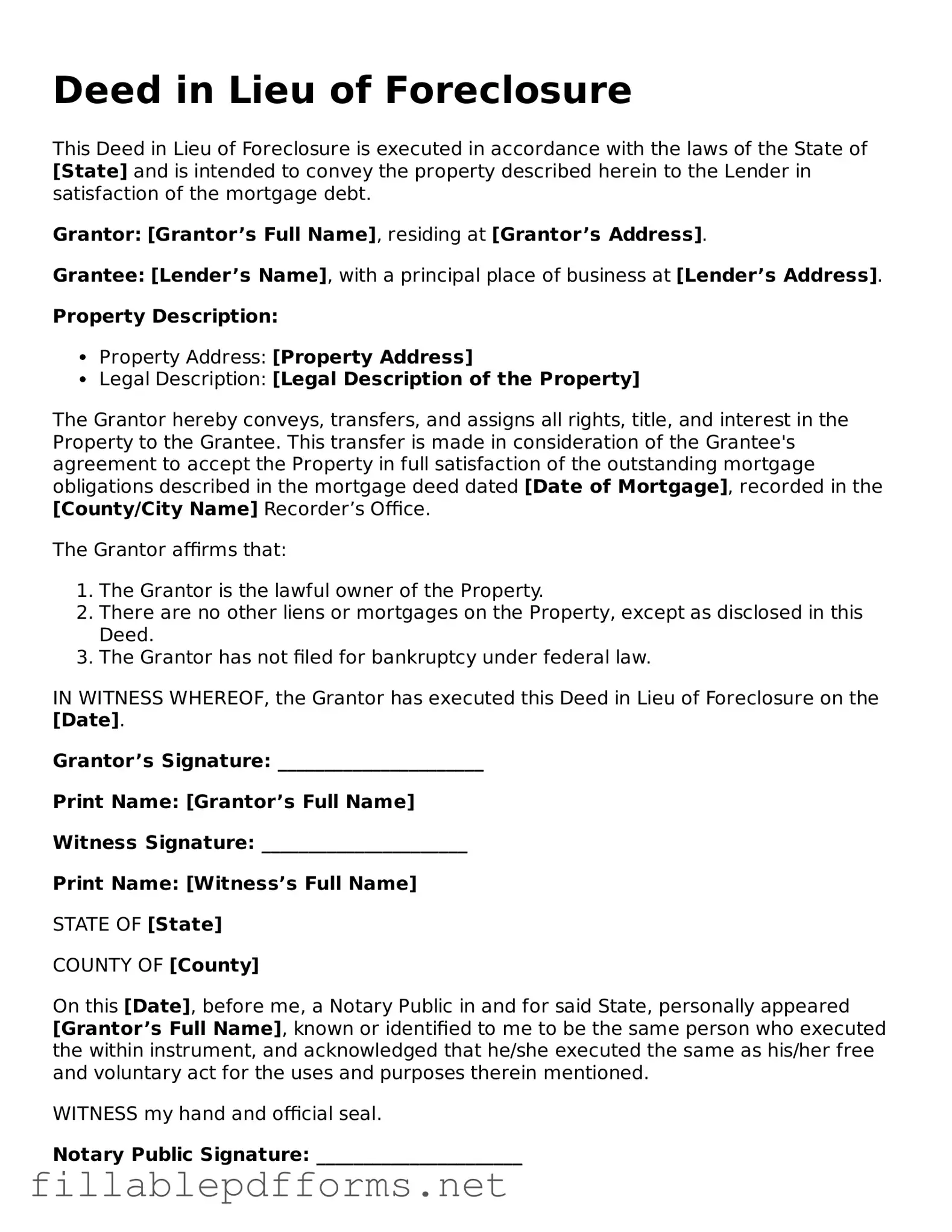The Deed in Lieu of Foreclosure form serves as a significant legal document in the realm of real estate and mortgage transactions. It provides an alternative solution for homeowners facing financial difficulties, allowing them to transfer ownership of their property back to the lender without undergoing the lengthy and often stressful foreclosure process. This form is typically utilized when a homeowner can no longer meet their mortgage obligations and seeks to avoid the negative impact that foreclosure can have on their credit and future financial opportunities. By completing this form, the homeowner agrees to voluntarily give up their rights to the property, effectively relinquishing it to the lender in exchange for a potential release from the remaining mortgage debt. The process can vary depending on the lender's policies and state laws, but generally, it aims to benefit both parties by simplifying the resolution of a defaulted loan. In addition to the transfer of property, the form may also address issues such as the condition of the property, any existing liens, and the responsibilities of both the homeowner and the lender throughout the transaction. Understanding the implications and requirements of the Deed in Lieu of Foreclosure form is crucial for homeowners considering this option, as it can provide a pathway to financial recovery while minimizing the emotional and financial toll associated with foreclosure.
